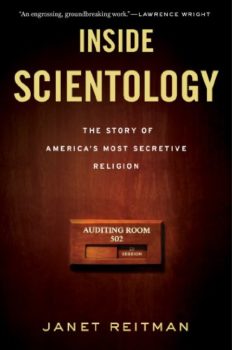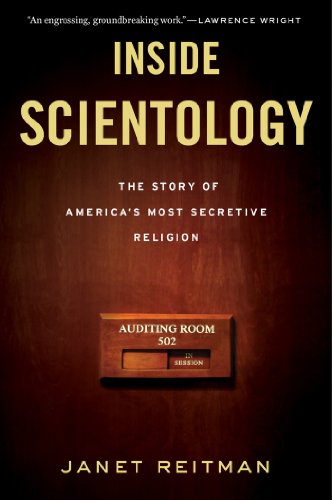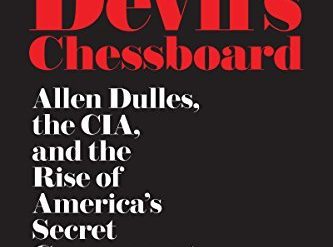
When L. Ron Hubbard died in 1986 at the age of 74, one of the world most confounding and controversial public figures passed from the scene — though not from memory.
- Borrowing a 19th-century approach to mental therapy from psychiatrists Sigmund Freud, Josef Breuer, and others, as the basis for his own self-help method, Hubbard had become psychiatry’s most prominent critic for its dismissal of the therapeutic techniques he claimed could be administered by anyone without the benefit of training in medicine or psychology.
- Having declared in 1945 when flat broke that he would found his own religion, by the time of his death he had built a worldwide “church” through which he amassed an estate of $400 million—$826 million in 2012 dollars.
- Never having graduated from college, he styled himself as an explorer, a nuclear physicist, and a philosopher with advanced degrees to match, all the figments of his fertile imagination.
- A second-rate writer of pulp adventure fiction in the 1930s and of science fiction in the 1940s and 50s, he attained a ranking on the New York Times bestseller list only through his self-help book, Dianetics, published when Hubbard was approaching age 40.
- Upon his passing, Hubbard had achieved a semblance of immortality, elevated to spiritual sainthood by millions of followers around the world who treated his every written word and every utterance as unchallengeable truth.
Inside Scientology: The Story of America’s Most Secretive Religion by Janet Reitman ★★★★★
Adding to the irony of Hubbard’s existence, this champion of mental health and outspoken opponent of psychiatry spent his last several years, by all accounts, an abusive and paranoiac lunatic whose erratic behavior was moderated only by the very anti-psychotic drugs he had crusaded against for more than three decades.
Thus ended the life of the founder of Scientology.
Since Hubbard had failed to name a successor, a vicious struggle for power in the “church” ensued upon his death. In hindsight, however, the victor in this struggle had been foreordained. Beginning four years earlier, once Hubbard had gone into seclusion, his whereabouts a secret from all but a handful of his staff, a 19-year-old named David Miscavige had begun forcing out all those in Scientology’s leadership who stood in his way. The process resembled nothing so much as the purges launched by Josef Stalin in the 1920s following the death of Lenin. By 1988, the 25-year-old Miscavige stood at the pinnacle, the undisputed leader.
An obsessive, rigid, profit-driven leadership style
To judge from Janet Reitman’s exhaustively researched and detailed reporting in Inside Scientology, Miscavige has run the multi-faceted Scientology establishment for nearly a quarter-century now with a style that is at once obsessive, rigid, humorless, unforgiving, and dedicated almost exclusively to the pursuit of profit. He appears to exhibit virtually none of L. Ron Hubbard’s good qualities—irresistible charm, a forgiving nature, managerial ability, and a lively imagination—and all of his bad ones, including extreme litigiousness and a tendency to strike out at those closest to him. In recent years, Reitman reports, Miscavige has even demonstrated a clear pattern of severe paranoia much like what drove Hubbard into seclusion, sometimes attacking aides and senior executives with physical violence, at other times submitting them (or anyone else who so much as utters a hint of criticism) to humiliating punishment.
Just as he had engineered the “first Exodus” from Scientology on his drive to power in the 1980s, Miscavige’s extreme behavior led to a second Exodus in the middle of the last decade, driving away most of the senior executives who had managed the far-flung business, in some cases for decades.
As you’re no doubt aware, the Internal Revenue Service classified the Church of Scientology as a religion, exempting all its innumerable affiliates and subsidiaries from the payment of Federal taxes and allowing them to receive tax-deductible donations. However, what you may not be aware—I certainly wasn’t, before reading Reitman’s book—is that the agreement signed by the “church” and the IRS in 1993 came about because the then-Director of Internal Revenue cried chicken in the face of literally thousands of lawsuits filed by the Scientology establishment under Miscavige’s direction and its constant use of private detectives to harass and apparently even blackmail IRS agents and staff.
A book that took years to complete
Janet Reitman’s book began as an article in Rolling Stone magazine but took years to complete. It’s a stellar example of the reporter’s craft, balanced and objective. Yes, balanced: Reitman quotes Scientology officials and long-time faithful adherents at length — and even in the book’s closing thoughts — demonstrating that for some, perhaps a great many, who give over their lives to Hubbard’s “technology” (as he styled it), life can be rewarding. However, there are far too many former Scientologists who have spoken out, especially in recent years, blasting Miscavige’s administration if not the core ideas of Scientology itself, to think of this now six-decade-old movement as anything other than a diversified, multinational business built by a movement that operates precisely like the cult it is so often accused of being.
Like McDonald’s, which earns more revenue from its real estate than from Big Macs and Chicken Nuggets, the Church of Scientology now derives the lion’s share of its income from its real estate holdings around the world. Other businesses contribute additional funds. And yet the “church” itself seemingly continues to gush money, even as the faith is in decline: one of its centers alone, in Clearwater, Florida, the movement’s spiritual headquarters, reportedly was grossing more than $1 million a week as recently as a decade ago.
A “church” that possesses wealth in the billions
If that’s the case, and hundreds of other Scientology centers in cities and towns around the world remain in business only because they’re profitable (the yardstick the “church” applies), I can’t begin to imagine how large is the asset base ruled today by David Miscavige. If he began 24 years ago with the equivalent of the $826 million that Hubbard left to the movement, surely the “church” today possesses wealth in the billions.
For additional reading
Like to read books about politics and current affairs? Check out Top 10 nonfiction books about politics.
If you enjoy reading nonfiction in general, you might also enjoy:
- Science explained in 10 excellent popular books
- Great biographies I’ve reviewed: my 10 favorites
- My 10 favorite books about business history
And you can always find my most popular reviews, and the most recent ones, plus a guide to this whole site, on the Home Page.




























When I was in Rome with Robin back in 2006, and visited the Vatican – I came away disgusted at the opulence which I cannot imagine Jesus would never have approved of. Perhaps Hubbard had good intentions (which I really doubt) but once you have set something loose – you lose control of where it goes in the generations that follow – and if the follow-on generations are more interested in consolidating power than anything else – this is the result, whether it is a far flug closely held business empire ruled by an autocrat – or a top down religious authority. Either way, the adherents are asked to give up major control over their lives to a higher authority. It is fucking scary.